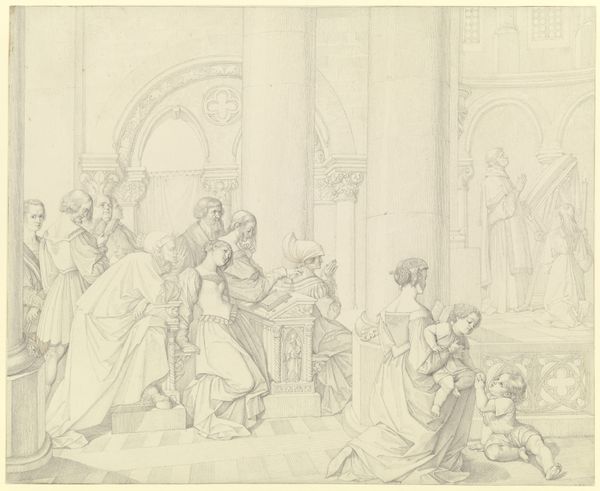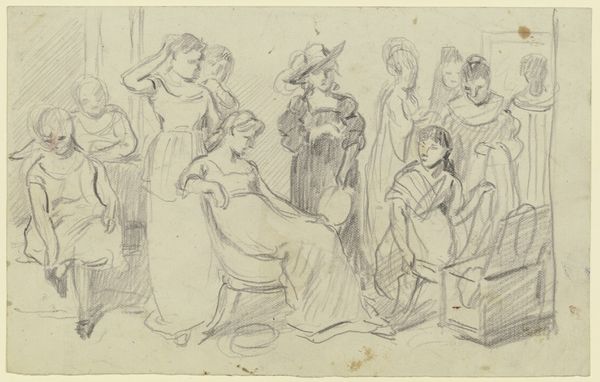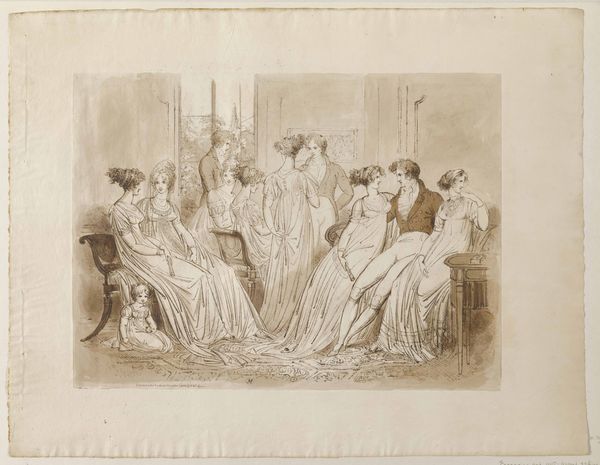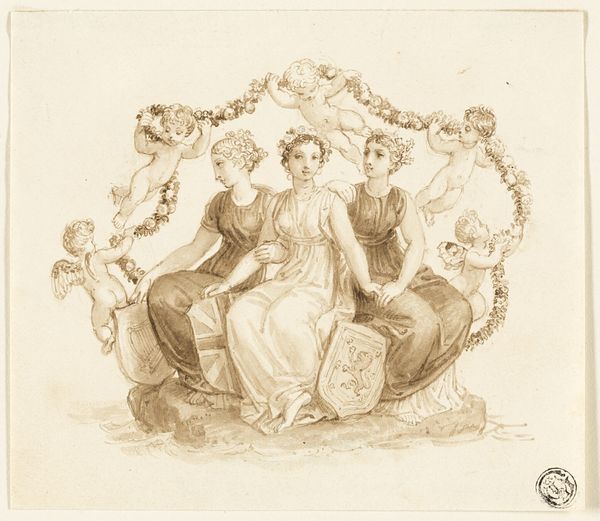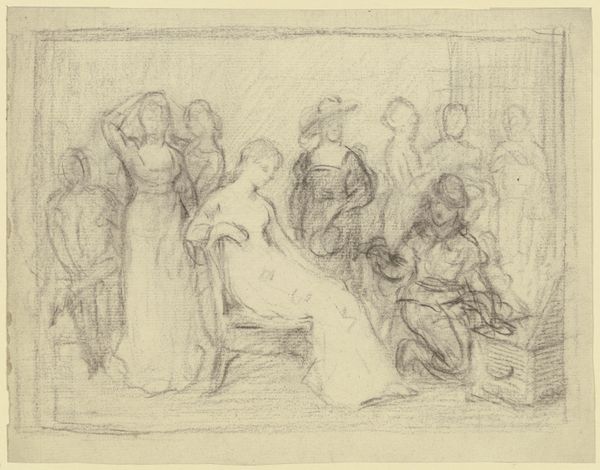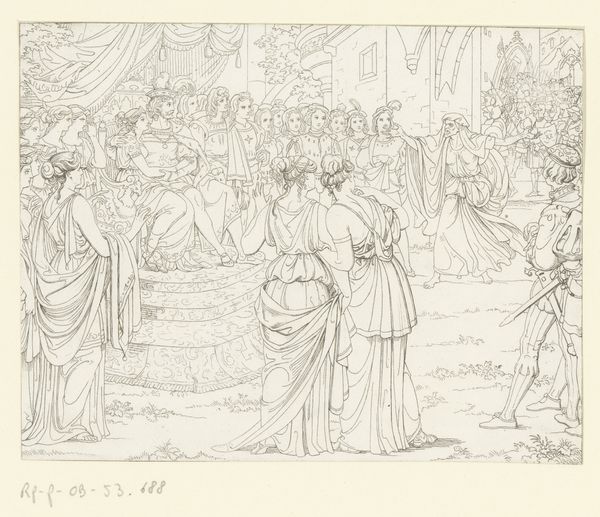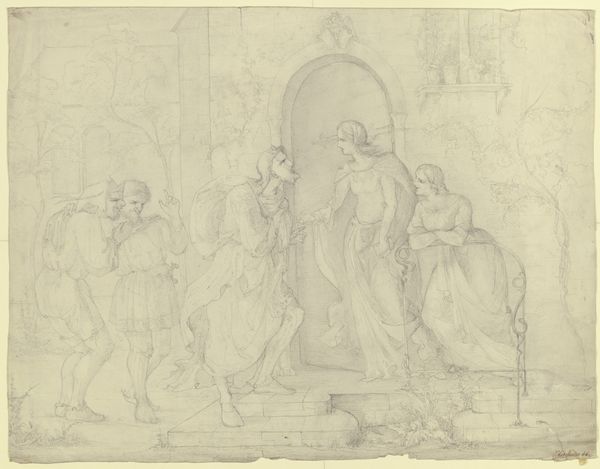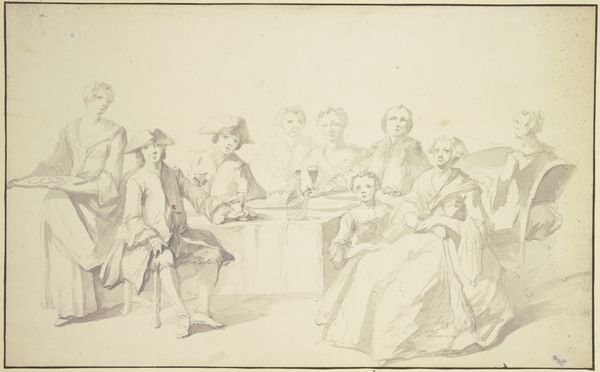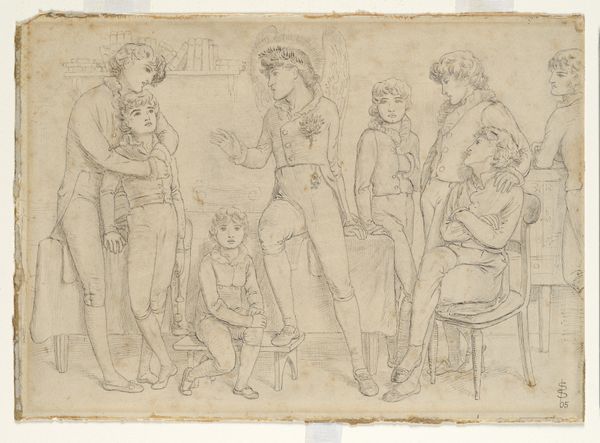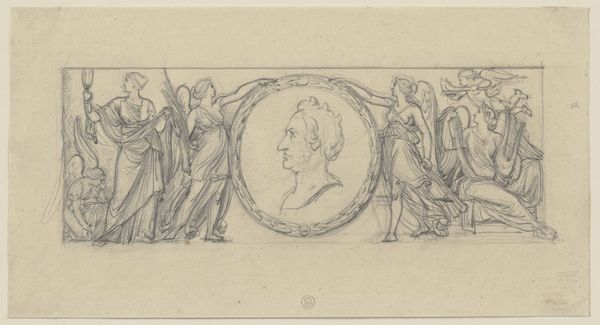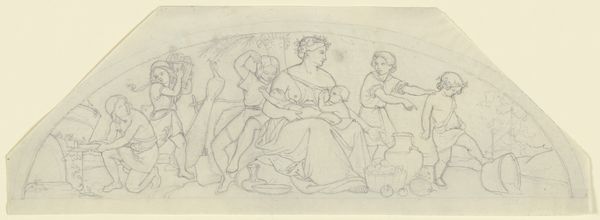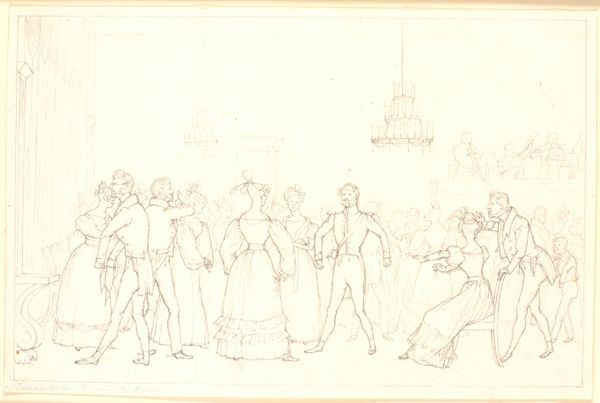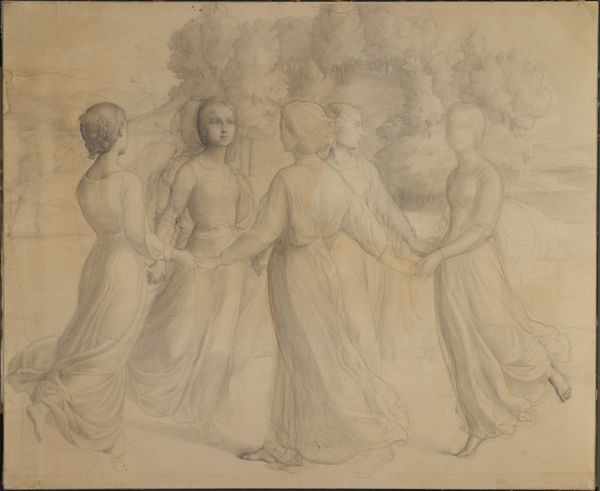
drawing, paper
#
portrait
#
drawing
#
neoclacissism
#
paper
#
classicism
#
history-painting
#
academic-art
Copyright: Public Domain
Editor: This is Gavin Hamilton's drawing, "Achilles nimmt Abschied von Briseis." The title is German, so roughly translates to Achilles saying goodbye to Briseis. It’s done on paper, presumably sometime in the late 18th century given its Neoclassical style. I'm struck by how restrained the emotion is, despite the heavy subject matter. What do you see in this piece? Curator: The emotional restraint you mention is interesting. The image resonates with symbols of duty and sacrifice, especially prevalent during the Neoclassical period, echoing the Enlightenment's emphasis on reason over raw emotion. Achilles, a figure laden with heroic symbolism, is seemingly impassive. What feelings emanate from Briseis, would you say? Editor: Sadness, certainly. Her hand is held, yet there's a feeling of being led away. Is the symbolism mostly about portraying moral virtue, then? Curator: To some extent, yes. But the arrangement of the figures tells a story. Notice the architectural setting; It creates a stage for this very poignant human drama. What repeated shapes do you see echoed across their figures? Editor: The repetition of folds and drapery creates a classic look I see here. The soft rendering helps suggest the moment is emotional and private even within the camp of soldiers. Curator: Exactly! These recurring motifs might even reference the ebb and flow of destiny itself, as the figures resign themselves to larger, unseen forces and circumstances of history and society. Editor: That’s really interesting. I initially saw it as a simple history painting, but now I appreciate the layers of meaning embedded within its visual language. It makes you consider not only the subject matter but the emotional complexity inherent in every character in every event. Curator: Indeed! It's in recognizing these artistic languages, cultural references, and human expressions, that a simple historical portrayal of this tragic scene transforms into a reflection of us all, bound as we are by duty and love and by fate's unfathomable directions.
Comments
No comments
Be the first to comment and join the conversation on the ultimate creative platform.
